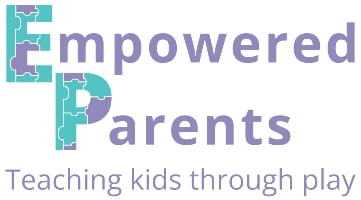Introducing young children to graphing can be fun and engaging with hands-on activities.
Before drawing data, they can organize objects like shoes, crayons, or toys to visualize and compare. This helps preschoolers practise essential maths skills such as sorting, counting, and estimating while preparing them for more complex graphing concepts in the future.
Here are some simple ideas for teaching graphing:

1. We are a Graph!
Use the children as the data sets, sorting them by two or three characteristics: boy/girl, long sleeves/short sleeves/no sleeves, or light hair/dark hair/red hair.
Kids join the appropriate line. Tiled floors are great, in that they offer a simple grid where the children can stand or sit.
This is the type of activity that will help children develop an understanding of one-to-one correspondence.
2. It’s a Shoo-In
Ask the kids to each take off one shoe, which always brings a few giggles.
Graph the results to compare the number of tie shoes and other popular fasteners, such as hook & loop, zippers or buckles.

3. Ice Cream Favourites
Children choose a favourite ice cream between two or three common flavours, such as chocolate, vanilla and strawberry.
Use coloured paper or real cones with fluffy pom-poms on the grid to represent the ice cream scoops. Follow up with a yummy ice cream party!
4. Track the Weather
Discuss the weather each day: sunny, cloudy, rainy, snowy or windy. Pick the characteristic that most clearly expresses that day and fill in a graph with the picture to represent that weather condition.
At the end of the week, compare the results.
5. Fruity Graphs
Gather various fruits from the counter and refrigerator, or borrow fruits from lunchboxes if doing this activity at school.
Arrange them on a graph grid to count and compare.

6. Loose Parts Graphing
Use different types of loose parts to create graphs based on attributes like size, colour, and shape.
Choose among the favourites of your particular children: building blocks, pegs, cubes, buttons and coins.
7. Favourite Stuffed Animals
Invite children to select their favourite stuffed animals for a graphing activity.
These could be graphed by various characteristics: colour, animal type, size or land/air/water.
8. Survey Pocket Chart
A pocket chart works well to show the results of a survey question, such as, “What is your favourite zoo animal?”
Different animals are shown on cards slipped into pockets along the bottom of the chart. Each child has a card with their name and picture. They vote and add their cards to the pockets, forming a graph of results.
This same idea can then be used with any type of survey question.
9. Crayon Colours
Children choose one favourite colour of crayon from buckets with limited choices to avoid too many results.
They place them on a grid to compare the results.
10. Marbles in a Jar
Use two identical clear jars to compare the number of coloured marbles added.
These can be based just on the colours or can stand for something else, such as yellow added for sunny days and white added for cloudy.

Discuss how far up in the jars the marbles reach. Then count for an exact comparison.
11. Picture Postcards
Invite kids to each bring in one picture postcard.
Organize into a graph based on those that picture people, animals, buildings and nature scenes.
12. Books We Love
After reading several picture books, have children choose their favourite to show in a graph.
Small cut-outs of book covers add a touch of real-world authenticity.
13. Breakfast Cereals
Kids choose their favourite type of breakfast cereal from among limited choices. They each add a piece of that cereal to the grid to compare the results.
14. Circle Graphs/Pie Charts
Survey questions such as favourite colours can be presented to kids with choices of “pie slices” in equal sizes cut from coloured paper.
They arrange the pie slices on a large circle, such as a paper plate, grouped by colour for comparison.
15. Graphing with Curious George
Show kids the video in which Curious George begins sorting the books by colour while working in the library.
Challenge children to sort a group of books by a set characteristic, such as colour, size or animal/human characters on the cover.
They can then make a graph of their results.
When introducing preschoolers to graphing, start with the most concrete examples, like physical objects they can hold. Then, lead into the more abstract examples, such as pictures of objects and coloured boxes that represent real-life things.
Also, start out by comparing just two sets of data (like cars and trucks), then lead into activities with three or more options to compare.
Here are some more fun maths activities for preschoolers.

